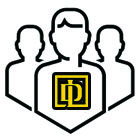Design Objection
Facing a design objection is a critical stage in India’s design registration process, during which the examiner evaluates your submitted design against specific criteria to ensure its originality and compliance with the Designs Act. You must promptly and effectively resolve any issues that arise, including non-compliance with a design’s legal definition or similarities to existing designs. By resolving these objections, you must effectively register your design and guarantee its protection under intellectual property laws.
What is Design?
Section 2(d) of the Designs Act 2001 defines ‘design’ as the visual aspects of shape, pattern, configuration, composition, or ornamentation applied to any two-dimensional or three-dimensional article through industrial or manual processes. Any combination of colors or lines utilized in the final product is visually appealing. However, it does not include the functional aspects of construction or merely mechanical components.
Process of Design Registration
Each design registration application undergoes a meticulous examination to ensure it meets the required standards. The design’s approval is contingent on the absence of objections in the application or satisfactory resolution of any raised concerns. The Patent Office will provide the applicant with a design registration certificate, confirm the approval, and publish the design details in their journal.
The legitimate design owner’s intellectual property protection is valid for 15 years. The design registration is initially valid for ten years. However, by applying for renewal, you can extend this protection for an additional five years.
Design Objection
A design objection is a term that refers to any concerns or issues that the examining authority raises during the design application’s evaluation process. These objections may pertain to various design elements, including originality, documentation clarity, and adherence to established standards as well as formats. The objective of design objections is to make sure that the design fulfils the requisite standards for registration and protection under intellectual property laws. Applicants are typically required to address these objections by providing clarifications, amendments, or additional information to address the concerns raised by the examining authority.
Successfully overcoming these objections is important for the design application’s progression and eventual approval, as well as making sure the design’s legal registration and protection.
Grounds for Design Application Objections
The examination officer has the authority to object to a design application on a variety of grounds, with a primary emphasis on making sure that the design is unique as well as adheres to procedural requirements. Examination officers often raise objections for the below reasons:
- Lack of Novelty: If the design closely resembles existing designs in the public domain, it may not be considered new or original, failing to meet the uniqueness criteria necessary for protection.
- Improper Documentation: If the submitted documents and representations do not adhere to the required standards or formats, the Patent Office may object.
- Unclear Visuals: The unclear, improperly presented, or incorrectly represented photos or drawings attached to the application may make it difficult for the examination officer to assess the design’s distinctiveness and originality.
- Non-Submission of Power of Attorney: The absence of a Power of Attorney, which authorizes the representative to act on behalf of the applicant, may lead to objections if an agent or representative submits the application on behalf of the designer.
We provide Custom Solutions for your legal problemns
Contact us
Security, Confidente & Reliable Solutions
Contact us
Calculate all your liabilites and pay as well
Contact us

When to Reply to Design Objection?
Following receipt of the objection notice, the applicant has a six-month period to address and rectify these concerns. By submitting a request with the necessary charge prior to the expiration of the initial six-month deadline, you may extend this period by an additional three months.
How can I file a reply to a design objection?
- Review the Objection Notice: Make sure that you go through the Patent Office’s objection notice in its entirety to obtain a comprehensive understanding of the concerns it addresses.
- Evaluate the Objections: Evaluate each of the objections mentioned in the notice to highlight the specific points that your response must address.
- Gather supporting documents: Collect all required documents, evidence, and information that support your response to each objection.
- Draft Your Response: Compose a comprehensive and exhaustive response that addresses each objection individually. Clearly state your plan to address or refute each objection, including any requisite evidence and explanations.
- Submit Your Reply: Submit your response to the Patent Office within the timeframe specified in the objection notice.
Process After Filing a Reply to Design Objection
After submitting a response to a design objection, the subsequent process includes the following steps:
Review of Responses
The Patent Office carefully reviews the response of the applicant to the objection notice to assess how well it addresses the raised concerns.
Assessment of Responses
The provided response is compared to each point of objection to ascertain whether the concerns have been satisfactorily resolved.
The response is examined for precision, completeness, and adherence to regulatory requirements.
Registration and Publication
The Controller will direct the registration and subsequent publication of the design details once he has resolved all the issues in the Examination Report and verified the design’s novelty or originality. This includes an illustration of the article that best demonstrates the design. Upon acceptance, the Patent Office publishes a registration certificate and notifies the public of the registration in its journal.
Hearing and Public Inspection
If the objections remain unresolved, the Controller grants the applicant a personal hearing to discuss the application further. After the hearing, the controller decides whether the application should proceed. Once published in the official gazette, the public can access registered designs by paying a specified charge and submitting a formal request.
Term of Protection
In India, the protection of a design registration lasts for ten years from the date of registration. You can make sure the ongoing protection of the design under Indian intellectual property laws by submitting an extension application and paying the required fee to extend the initial term for an additional five years.
Summary
Design registration process evaluates the submitted design against the Designs Act criteria to ensure originality and compliance, which is an essential step. This evaluation is known as the “design objection.” Section 2(d) of the Designs Act 2001 defines ‘design’ as the visual aspects applied to any article, excluding functional components. A meticulous examination is part of the design registration process, and approved designs receive a registration certificate and 15 years of intellectual property protection. The protection is initially valid for ten years, with the option to extend it for an additional five years. Design objections are caused by a lack of novelty, improper documentation, unclear visuals, or a lack of power of attorney. Applicants must resolve them within six months, with the option to extend the timeframe by three months. Applicants should draft a comprehensive response, review the objection notice, gather supporting documents, and submit it within the designated timeframe. The Patent Office reviews and evaluates the response after submission. The Patent Office registers and publishes the response if it resolves the issues. If the issues persist, a hearing is scheduled. St. The public can access registered designs and extend protection by applying and paying the required fee.

Expert guidance

Dedicated team

Client satisfaction

Ongoing support

Transparent processes
FAQ’s
A design is defined as the visual aspects of shape, pattern, configuration, composition, or ornamentation applied to any article, excluding functional components.
In India, the initial validity period for design registration is ten years.
By applying for renewal before the initial term expires, you can extend the design protection period by an additional five years.
Design objections are frequently based on the following: improper documentation, unclear visuals, lack of novelty, and failure to submit a Power of Attorney.
Applicants have a six-month response period to a design objection notice, which they may extend by three months upon request and payment of the necessary fee.
Review the objection notice, evaluate objections, gather supporting documents, draft a comprehensive response, and submit it within the specified timeframe.
The Patent Office reviews the response, evaluating its completeness and compliance with regulations. The Patent Office approves registration and publication if they resolve the issues.
The public can access registered design details by paying a specified charge and submitting a formal request after the design is published in the official gazette.

